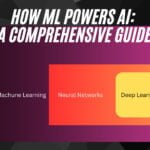How would it make you feel if you can create content using AI in any domain and format with minimal human guidance? Does this sound too good to be true?
Well, not anymore. Meet AutoGPT, a new AI system that can generate content in any domain and format with minimal human guidance. AutoGPT is based on GPT-3, a large-scale language model that can generate natural language texts on various topics and tasks.
However, unlike GPT-3, which requires specific prompts for each task and domain, AutoGPT can automatically infer the task and domain from the input and generate the appropriate output. In this blog post, I will explain what AutoGPT is, how it works, and what are some of the benefits and challenges of using it.

Table of Contents
What is AutoGPT?
AutoGPT is a new AI system that can generate content in any domain and format with minimal human guidance. It is based on GPT-3, a large-scale language model that can generate natural language texts on various topics and tasks. However, unlike GPT-3, which requires specific prompts for each task and domain, AutoGPT can automatically infer the task and domain from the input and generate the appropriate output. You can say that AutoGPT is the stepping stone towards AGI (Artificial General Intelligence).
Toran Bruce Richards (Indiepreneur and Game Developer at Significant Gravitas, and the developer of Auto-GPT) says that “Auto-GPT is an experimental open-source application showcasing the capabilities of the GPT-4 language model. This program, driven by GPT-4, chains together LLM “thoughts”, to autonomously achieve whatever goal you set. As one of the first examples of GPT-4 running fully autonomously, Auto-GPT pushes the boundaries of what is possible with AI.”
Sabrina Ortiz, Associate Editor (ZDNET) says, “This means that AutoGPT can perform a task with little human intervention, and can self-prompt.”
And, Arva Rangwala says in OpenAI Master, “It can rewrite and improve its own code, allowing it to recursively debug, develop, and self-improve.”
AutoGPT works by using a meta-learning algorithm that learns how to learn from different tasks and domains. It uses a few-shot learning technique that allows it to adapt to new tasks and domains with only a few examples or instructions. For example, if you want AutoGPT to write an email for you, you can just give it a few examples of emails or some instructions on what to write. AutoGPT will then generate an email for you based on the examples or instructions.
AutoGPT can generate content in any domain and format that GPT-3 can handle.
For example, it can generate content for:
- Text: articles, essays, summaries, reviews, headlines, captions, tweets, etc.
- Image: drawings, paintings, logos, icons, memes, comics, etc.
- Audio: music, speech, sound effects, podcasts, etc.
- Video: animations, movies, trailers, commercials, etc.
How is AutoGPT Different from ChatGPT?
ChatGPT is another AI system that can generate content in any domain and format with minimal human guidance. It is also based on GPT-3 and uses a few-shot learning technique.
However, ChatGPT is different from AutoGPT in two ways:
- ChatGPT is designed for conversational content generation. It can generate content that is interactive, engaging, and personalized. It can also generate content that is context-aware, coherent, and consistent. For example, ChatGPT can generate content that responds to your messages, questions, or feedback. It can also generate content that remembers your previous conversations and preferences.
- ChatGPT is designed for multi-modal content generation. It can generate content that combines different modes, such as text, image, audio, and video. It can also generate content that is synchronized and integrated across different modes. For example, ChatGPT can generate content that matches the text with the image, the audio with the video, or the speech with the facial expression.
How Does AutoGPT Function?
AutoGPT functions by using a three-step process:
- Step 1: Input. AutoGPT takes an input from the user. The input can be a prompt, a query, a command, a keyword, an example, or anything else that indicates the task and domain of the desired output. The input can also be empty or blank if the user wants AutoGPT to generate something random or creative.
- Step 2: Inference. AutoGPT infers the task and domain of the desired output from the input. It uses a meta-learning algorithm that learns how to learn from different tasks and domains. It also uses a few-shot learning technique that allows it to adapt to new tasks and domains with only a few examples or instructions.
- Step 3: Output. AutoGPT generates an output for the user. The output can be in any domain and format that GPT-3 can handle. The output can also be customized and personalized based on the user’s preferences and feedback.
Is AutoGPT the Future of AGI?
AutoGPT is a remarkable AI system that can generate content in any domain and format with minimal human guidance. It is one of the most advanced and versatile AI systems available today. However, it is not yet the future of Artificial General Intelligence (AGI), but a stepping stone towards it.
AGI is the ultimate goal of AI research. It is the ability of an AI system to perform any intellectual task that a human can do. AGI is not only about generating content but also about understanding, reasoning, learning, planning, problem-solving, decision-making, creativity, and more.
AutoGPT is not yet capable of achieving AGI because it still has some limitations and challenges.
Some of them are:
- Data quality and quantity. AutoGPT relies on large amounts of data to learn from different tasks and domains. However, not all data are reliable, relevant, or accurate. Some data may be incomplete, – Data quality and quantity. AutoGPT relies on large amounts of data to learn from different tasks and domains. However, not all data are reliable, relevant, or accurate. Some data may be incomplete, outdated, biased, or misleading. AutoGPT may not be able to distinguish between good and bad data and may generate content that is incorrect, inappropriate, or harmful.
- Generalization and transfer. AutoGPT can adapt to new tasks and domains with only a few examples or instructions. However, it may not be able to generalize or transfer its knowledge and skills across different tasks and domains. It may not be able to handle tasks or domains that are too complex, novel, or ambiguous. It may also not be able to handle tasks or domains that require common sense, logic, or creativity.
- Interpretability and explainability. AutoGPT can generate content in any domain and format with minimal human guidance. However, it may not be able to explain how or why it generated the content. It may not be able to provide the sources, references, or evidence for the information it provides. It may also not be able to justify its choices, actions, or decisions.
Free AutoGPT Resources
- The very first auto AI, BabyAGI is now web based
- Launch Auto-GPT by Significant Gravitas, locally on you PC
- Deploy autonomous agents from AgentGPT. You can download and study the steps through which a blog post was generated by AgentGPT
- Another AGI inspired by AutoGPT is God Mode by Emil Ahlbäck, Lonis and Fant
- Explore the potential of AI tooling with Cognosys, an innovative web-based AI agent aimed at simplifying complex tasks and increase your productivity
- Aomni is designed to quickly find, extract, and process any data you need on the internet
- With GoalGPT, you can create and deploy autonomous AI GPT robots to generate tasks autonomously, implement them, and learn from the outcomes
- The autonomous research assistant Toliman AI can search the web for useful and recent information, scrape it and create useful content with accurate references.
- Another autonomous AI agent by SamurAI also known as Autogpt
Video Resource
A video from Matt Wolfe founder of mattwolfe.com, on how to install and use these free Auto-GPT locally on your PC
Conclusion
AutoGPT is an exciting and innovative AI system that can generate content in any domain and format with minimal human guidance. It is based on GPT-3, but it can act autonomously and self-prompt. It can also perform web-based actions unattended, assign subtasks to itself, search the web, and improve its own code.
AutoGPT is one of the first examples of GPT-4 running fully autonomously, and it pushes the boundaries of what is possible with AI. However, AutoGPT is still in development and has some limitations, such as requiring internet access and being dependent on the quality of the GPT-4 or GPT-3.5 outputs.
AutoGPT also raises some ethical and social questions about the role and responsibility of AI in content creation. Therefore, AutoGPT should be used with caution and respect, and always with human oversight and feedback.
I hope you liked this read. Share your views in the comments.




